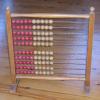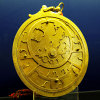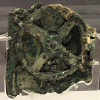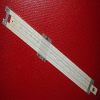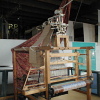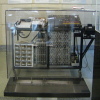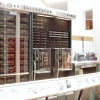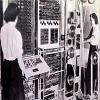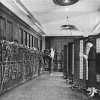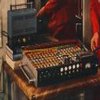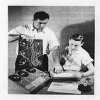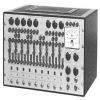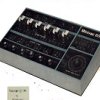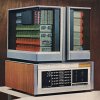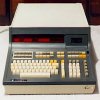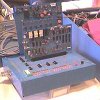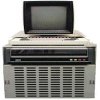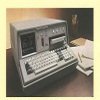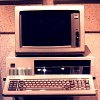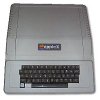This present article is intended as a sort of brief guide and homage to what has already become part of most of humanity's daily life, the computer. It is my pleasure to bring to you such interesting information, and at first, it will appear as a news article. With the aid of some positive feedback, it may evolve into a separate daily column. There will be a series of articles which will briefly describe the history of how the Personal Computer became so widely spread and what exactly it is made up of. Afterwards, I figured out that, since I am a hardware editor, I should present the evolution of each and every hardware component that is somehow related to our adorable PC. So, from now on, I'll try to write a daily article that tries to explain the wonders of these intriguing pieces of technology. Hopefully, this series of articles will provide interesting information for PC rookies and literates alike.
As I have mentioned before, this first article and the following ones will primarily focus on the time-line of what used to be, is and will be known as computers. I do not intend to transform this into an exhaustive history lesson. I will, however, try to be as clear as possible in order to make this information accessible, especially for the rookies or anyone who wants to know more about computers in general.
First of all, let us see what does the term COMPUTER mean. As with other recent terms, there is no standardized definition for the term COMPUTER, but it is generally known as an electronic device which can store/read, process and output data. Additionally, the computer features a special set of embedded instructions that enable the user to program it in order to execute a series of useful tasks. In this respect, a Computer is made up of hardware (physical electronic components) and software (instructions strings which can make up entire programs) components. There is a variety of hardware components that are part of or can be attached to a computer, but I will discuss about these later on. The computer shouldn't be confused with a calculator. Unlike calculators, computers feature a more elaborate programming language which makes them extremely versatile. With every new piece of hardware, there comes an improved set of instructions which helps programmers develop more sophisticated software, enabling the computer to perform even more and diverse tasks.
OK, let us now begin with the early technologies that prefigured the emergence of the Computer. The first use of the term COMPUTER referred to a person who performed numerical calculations with the aid of a mechanical calculating device. Such mechanical devices included the abacus (1000 - 500 B.C.), the astrolabe (2 century BC), the Antikythera mechanism or the slide ruler (the first recorded mechanical analog computer, circa 1620-1630 A.D.). However, all these devices do not present any programmable feature.
Regarding programmability, the first device to really implement programmable features was Joseph Marie Jacquard's automatic textile loom, introduced in 1801. For the first time, this loom incorporated a series of punched paper cards which formed templates to allow the waving of complex, predefined patterns automatically. It hasn't much to do with Computers nowadays, but it was an important step forward towards complex programmability and automation.
The ancestor of the actual computer can be considered Charles Babbage's Analytical Engine. Unfortunately, the American mathematician and physicist did not actually get to complete his device. Following Babbage's path, Herman Hollerith and the Computing Tabulating Recording Corporation (later to be known as IBM) put together in 1890 large-scale tabulating machines which used punched cards grids for automated data processing. The beginning of the 20th century brought technologies such as the punched card, the Boolean algebra system, the vacuum tube or the teleprinter, which are considered to be the very foundation of the early computers of the last century.
With the interesting breakthroughs in Physics, Mathematics and Astronomy from the beginning of the 20th century came an ever-growing need for computing and automation power. In the first half of the 20th century, the scientific community relied on sophisticated analog computers. They are called analog because they used a direct mechanical or electrical model of a specific problem for the computation basis. Unlike digital computers nowadays, the first analog ones did not feature programmable possibilities.Thanks to Claude Shannon's introduction of digital electronics, the analog computers cleared the way for the emergence of the first digital ones. Keep in mind that this was the 1930's and 1940's, so the computers back then were stored in one or several large halls and provided far less computing power than any present-day low-end PC. Still, they cost a fortune.
In May 1941, Konrad Zuse finished his first electromechanical computer at a German research institute. The Z3 is considered to be the first working automated computer embedding binary arithmetic procedures for a simplistic programmability capacity via film stock.
The first American digital computer was issued summer 1941 and relied on vacuum tubes to compute in binary code. It was named after the two researchers that built it, Atanasoff and Berry and it incorporated one of the first regenerative capacitor memory. In the UK, the Colossus computer (1944) was given top secret tasks during WW II. Although it was partially programmable via rewiring techniques, it proved to be pretty good at cracking German wartime codes thanks to its tubular array.
Harvard's Mark 1 used punched paper tape for programmable instructions in 1944 and ENIAC became the first general purpose electronic computer, despite its need to be rewired for programming purposes. The ENIAC was mainly used by US Army's Ballistics Research Laboratory and it was embedded with a decimal arithmetic code. In 1948m, the direct successor of the ENIAC - the EDVAC - used a more suitable and reliable technology to improve programmability: the stored program architecture, which primarily used the function table ROM (read only memory), was quickly adopted and became a standard. Many present-day PCs still incorporate the stored program architecture, proving that this technology helped the proliferation of the universal computer.
The present-day microprocessors are also based on this technology. Microprocessors actually implement stored program central processing units (CPUs). I will develop these issues in the article dedicated to the CPU.
As I have mentioned before, all these early achievements were based on fairly large pieces of equipment that were usually stored in large halls. The utility of these early computers was largely acknowledged and the process of miniaturization began with the advent of the stored program architecture. Let us now see how personal computers evolved. The quest of miniaturization began with Simon, the "build-it-yourself" computer architecture that was developed by Edmund Berkeley. The plans for the Simon computer were published between 1950 and 1951 in the Radio-Electronic journal. The computer itself was based on the relay technology and it cost about $300. By 1959, over 400 Simon plans were sold.The Geniac, also designed by Edmund Berkeley, was introduced in 1955 and was made up of electronic rotary switches. This was a fairly small size-factor computer that came user-programmable ready. It cost only $19.95 and many anthologies mention it as the first personal computer. In 1959, EC-1 was issued by Heathkit. EC-1 was commercialized as a kit, but it was only an analog device made up of analog tubes, and could solve a small number of problems.
Next came the Minivac 601 (1961), a computer based on six relays, which cost $135. The DEC PDP-8 was introduced in 1965 and required racks of peripherals in order to perform useful tasks. It cost a small fortune, but towards 1968, it became quite affordable. This model is the first one to feature core integrated memory (an improved version of the stored program architecture).
Although founded in 1939 by David Packard and Bill Hewlett, the Hewlett Packard Company introduced its first desktop machines in 1968. HP 9100A is considered to be a sophisticated programmable computer, but it is also true that many people consider it to be the first device to really fit the term "personal computer". Afterwards, the HP 9830 model (1972) featured an all-in-one computer look: the alphanumeric keyboard and a simplistic monochromatic display were present by default. This model also featured the BASIC programming language, but this information wasn't available when the device was first marketed and, as a result, very few people became aware of this fact. Of course this was way beyond affordable for the beginning of the 1070s: the $5975 price tag encouraged only scientists and engineers to buy it.Intel did not take part at the personal computer race, but still remains the proud father of the first microcomputer. That's why Intel chose to specialize in microprocessor architectures rather than in all-in-one personal computers. In 1972, Intel created the SIM4 microcomputers, which included PROM programmer cards.
Xerox, on the other hand, gets a prize for original and innovative concepts with its Alto model. Alto is the first computer to ever feature a mouse, a graphic user interface (GUI) and an object-oriented operating system (OS). It was also ready for the emergence of the Internet, including fast networking cards and the first ethernet card. This is an iconic model and it stood as a worthy example for entire generations. Unfortunately, the Alto was not commercially released.
MITS Altair, introduced in 1975, is the first computer to be associated with the Microsoft logo. Altair 8800 ran on Microsoft software but this does not necessarily mean that it was blazing fast. Microsoft-loving journalists mistakenly called it the first personal computer. They certainly haven't heard of Xerox Alto.
What about IBM? What, you expected to see the Big Blue as the loving father of the personal computer? In fact, IBM is among the last companies to release personal computers. In 1975, IBM introduces the 5100 model. It was really fast for those times, but the 64 KB memory model cost neared the $20,000 barrier. And finally, in 1981, IBM presented the first "PC" label. But this was the only innovation IBM could come up with, as the "original" design certainly barrows a lot from Xerox.
Oh, did I forget about Apple? Certainly not! Apple was the last important company that released a personal computer, regardless of what Steve Jobs would tell you. Apple is nonetheless, the first highly successful mass-produced personal computer as it cost only $1295.
That's it for this first article. For the next one, I thought of presenting the recent history of the PC and future predictions. Stay tuned for more interesting information about your favorite piece of hardware, the PC.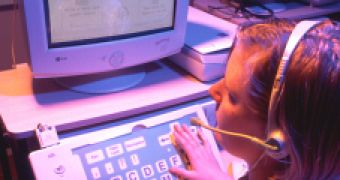
 14 DAY TRIAL //
14 DAY TRIAL // 